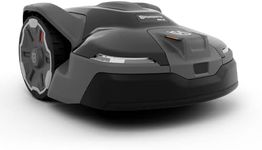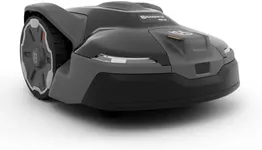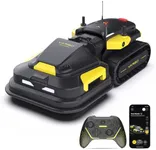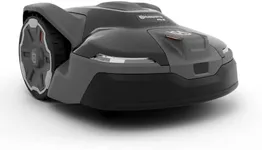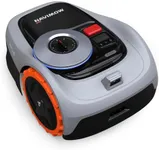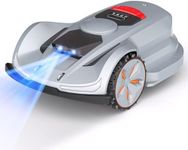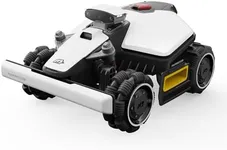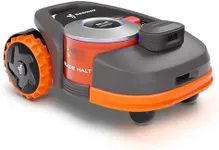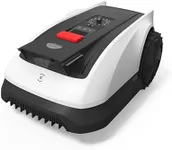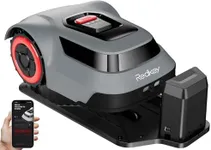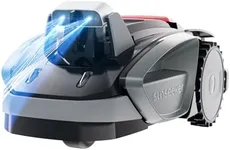Buying Guide for the Best Robot Lawn Mowers
Choosing the right robot lawn mower can make maintaining your lawn a breeze. These devices are designed to automatically cut your grass, saving you time and effort. When selecting a robot lawn mower, it's important to consider several key specifications to ensure you get the best fit for your needs. Understanding these specs will help you make an informed decision and find a model that suits your lawn size, terrain, and personal preferences.Lawn Size CapacityLawn size capacity refers to the maximum area that the robot lawn mower can handle. This is important because you want a mower that can cover your entire lawn without needing frequent recharges. Lawn size capacities are usually measured in square meters or acres. For small lawns, a capacity of up to 500 square meters may be sufficient. Medium-sized lawns might require a capacity of 500 to 1,500 square meters, while large lawns will need a mower that can handle over 1,500 square meters. Choose a mower with a capacity that matches or slightly exceeds your lawn size to ensure efficient operation.
Battery Life and Charging TimeBattery life indicates how long the mower can operate on a single charge, while charging time is how long it takes to recharge the battery. These specs are crucial because they determine how often the mower will need to return to its charging station and how long it will take to resume mowing. Longer battery life and shorter charging times are generally preferable. For small lawns, a battery life of 30-60 minutes may be adequate. Medium lawns might need 60-90 minutes, and large lawns could require 90 minutes or more. Consider your lawn size and how often you want the mower to operate when evaluating these specs.
Cutting Height and WidthCutting height refers to the range of heights at which the mower can cut the grass, while cutting width is the width of the path the mower cuts in a single pass. These specs are important for achieving the desired look of your lawn and for efficiency. Cutting height is usually adjustable, with common ranges from 20mm to 60mm. Choose a mower with a height range that suits your grass type and preferred lawn appearance. Cutting width affects how quickly the mower can cover your lawn; wider cutting widths mean fewer passes are needed. For small lawns, a cutting width of 15-20cm may be sufficient, while larger lawns might benefit from widths of 20-30cm.
Navigation and Mapping TechnologyNavigation and mapping technology refers to the systems the mower uses to navigate your lawn and avoid obstacles. This is important for ensuring the mower can efficiently cover your lawn without getting stuck or missing areas. Basic models may use random navigation, which is less efficient but suitable for simple lawns. More advanced models use GPS, boundary wires, or sensors to create a map of your lawn and follow a systematic mowing pattern. If your lawn has complex shapes, slopes, or many obstacles, opt for a mower with advanced navigation technology to ensure thorough and efficient mowing.
Slope HandlingSlope handling indicates the maximum incline the mower can manage. This is crucial if your lawn has hills or uneven terrain. Most robot lawn mowers can handle slopes of up to 20 degrees, but some advanced models can manage steeper inclines of up to 45 degrees. Assess the steepest parts of your lawn and choose a mower that can handle those inclines to ensure it can mow your entire lawn effectively.
Noise LevelNoise level refers to how loud the mower is during operation, measured in decibels (dB). This is important if you have close neighbors or prefer a quieter environment. Robot lawn mowers are generally quieter than traditional mowers, with noise levels ranging from 50 to 70 dB. For comparison, a normal conversation is about 60 dB. If noise is a concern, look for models with lower noise levels to maintain a peaceful atmosphere while mowing.
Smart Features and ConnectivitySmart features and connectivity refer to the additional functionalities that allow you to control and monitor the mower via a smartphone app or other devices. These features can include scheduling, remote control, and integration with smart home systems. They are important for convenience and ease of use. If you value the ability to control your mower remotely or want to integrate it with your smart home setup, look for models with robust connectivity options and user-friendly apps.
